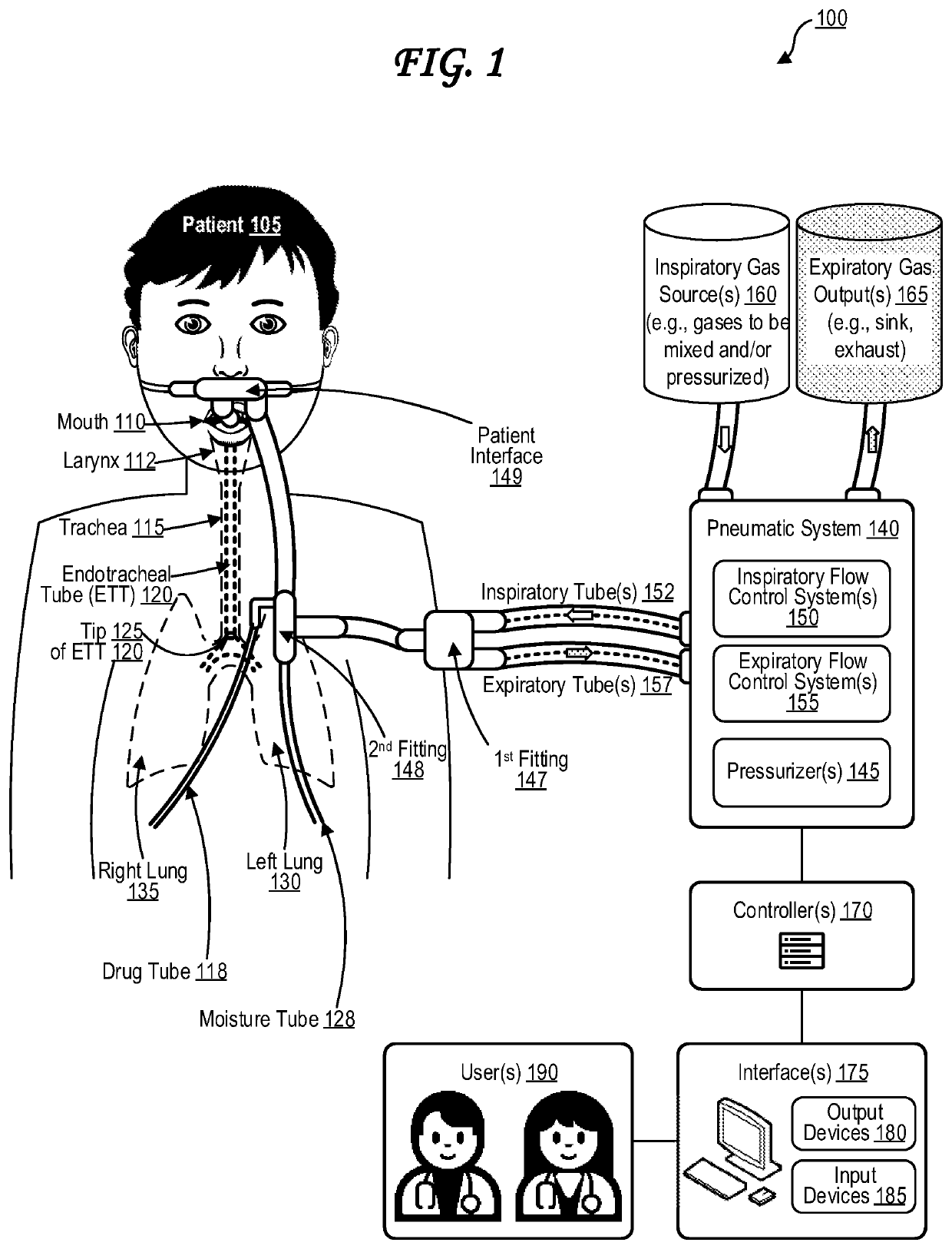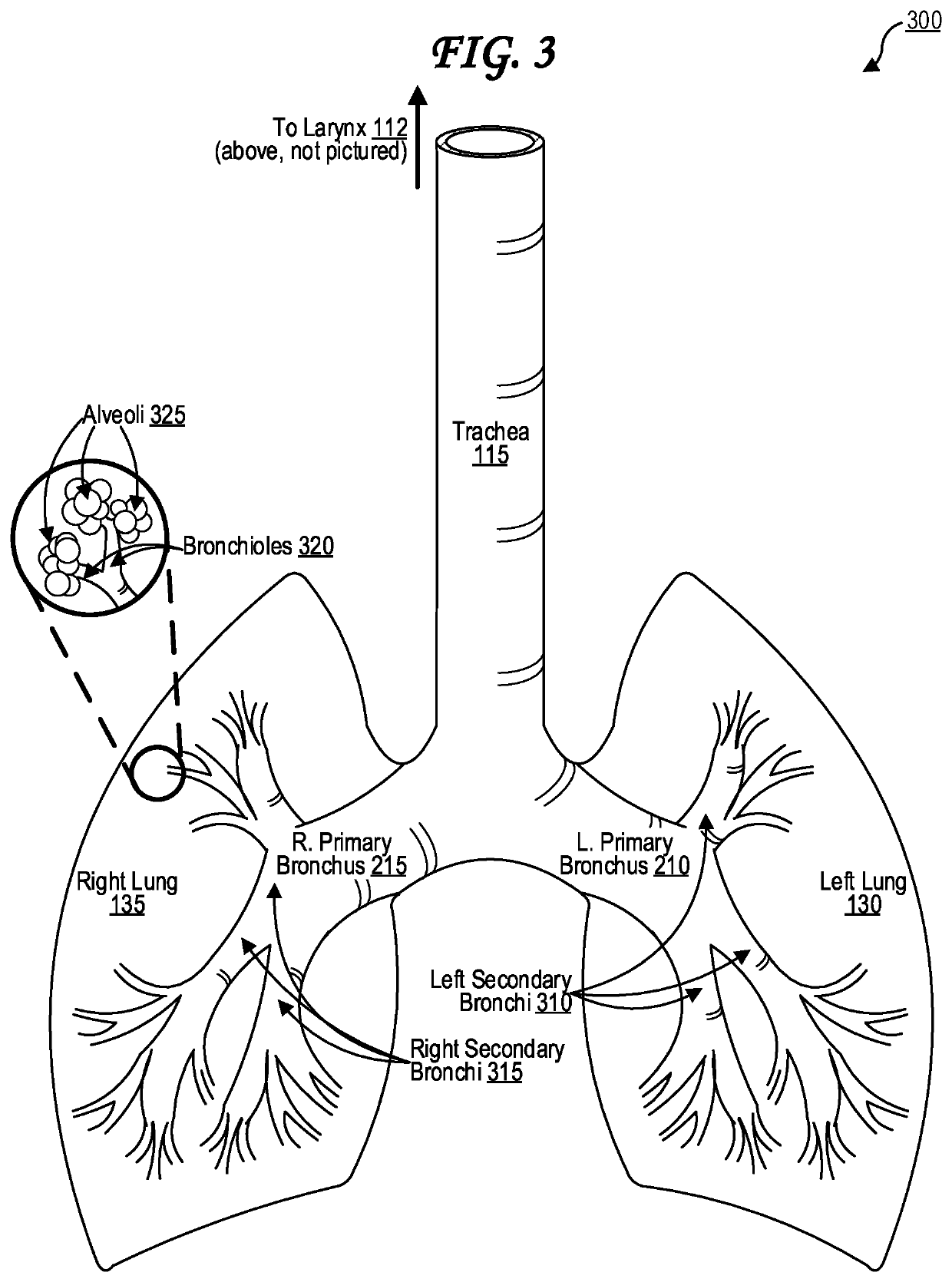Ventilator system with multiple airflow control lumens
a ventilator and airflow technology, applied in the field of ventilator systems, can solve the problems of infection or other diseases spreading through the patient's airways, dcas suspended in dead space are generally not accessible to inhaled medications or the human body's defense systems, and achieve the effects of reducing dead space, reducing dead space in the patient's airways, and increasing the clearance of dead spa
- Summary
- Abstract
- Description
- Claims
- Application Information
AI Technical Summary
Benefits of technology
Problems solved by technology
Method used
Image
Examples
Embodiment Construction
[0035]A ventilator is a life support machine that can be used to assist a patient with breathing. A ventilator generally includes an endotracheal tube that is inserted via mouth into the patient's trachea. A ventilator can mechanically provide an inspiratory gas into the patient's airways. A ventilator can mechanically evacuate an expiratory gas from the patient's airways. A ventilator may be used, for example, when a patient is having trouble breathing on their own due to an infection, an injury, a disease, a physical handicap, a physical disability, weakness, sedation, use of paralyzing anesthetics, another medical condition, another physical condition, another anatomical condition, or a combination thereof.
[0036]A patient's lungs and airways can become infected with and / or otherwise affected by a disease-causative agent (DCA). DCAs can include, for example, bacteria, fungi, viruses (e.g., virions, viral agents), parasites, protozoa, helminths, prions, toxins, synthetic toxicants,...
PUM
 Login to View More
Login to View More Abstract
Description
Claims
Application Information
 Login to View More
Login to View More - R&D
- Intellectual Property
- Life Sciences
- Materials
- Tech Scout
- Unparalleled Data Quality
- Higher Quality Content
- 60% Fewer Hallucinations
Browse by: Latest US Patents, China's latest patents, Technical Efficacy Thesaurus, Application Domain, Technology Topic, Popular Technical Reports.
© 2025 PatSnap. All rights reserved.Legal|Privacy policy|Modern Slavery Act Transparency Statement|Sitemap|About US| Contact US: help@patsnap.com



